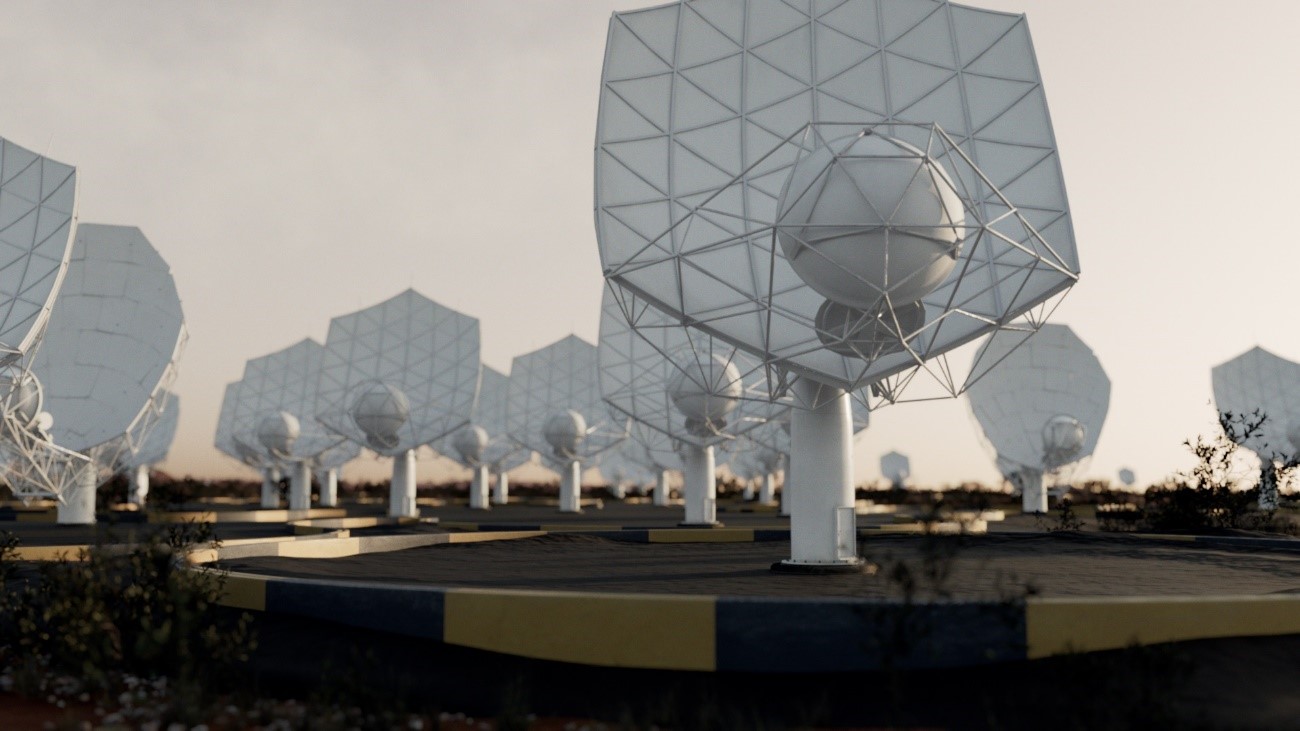The IAA-CSIC tackles the computational challenge of the SKA Observatory to study the birth of the first stars
Together with two other CSIC centres, it has contributed its experience in big data to tackle one of the remains of the future observatory, which will investigate the phase of the Universe in which stars were formed. The SKA Observatory, the largest scientific infrastructure planned to date, is an international effort to build the world's most powerful radio telescopes
When completed, the SKAO telescopes will surpass in sensitivity and observing speed the best radio astronomy facilities available today. SKAO will produce data that will require new methods of analysis, and to prepare the astronomical community for its novel nature, the SKA Data Challenges, a series of exercises with simulated data from the SKAO telescopes, are being held. The latest edition, SKA Data Challenge 3, involves three Spanish centres, the Instituto de Física de Cantabria (IFCA), the Centro de Supercomputación de Galicia (CESGA) and the Institute of Astrophysics of Andalusia (IAA-CSIC), which also coordinates the Spanish participation in the SKA project.
The seven-month deadline for the teams to analyse the data and deliver the results of this third challenge, which focused on one of the observatory's key scientific cases, the epoch of reionisation (the phase in the history of the universe when the first stars were formed), ended on 31 October. Twelve supercomputing centres offered their resources for the challenge, and a total of 234 participants registered. The Spanish community has been represented by CESGA and IAA, as resource providers, and by IFCA, as leader of one of the participating teams coordinated by Diego Herranz (IFCA researcher and member of the SKAO Science Working Group on the reionisation epoch).
CESGA has provided support to researchers from the universities of Chosun (South Korea), Xidian (China) and McGill in Montreal (Canada), providing them with access to the FinisTerrae III supercomputer, both its CPU and GPU (graphics processing unit). The IAA-CSIC has supported a team led by the KLE Technological University (India) and the Spanish team led by the IFCA, offering the computational resources of the prototype of the SKAO Regional Centre in Spain (SPSRC).

IFCA and IAA have carried out the scientific analysis of the Data Challenge data. The IFCA has provided its expertise in image processing, cleaning the data cubes provided by SKAO of galactic contaminants using polynomial fitting and principal component analysis techniques. Once the images had been processed, the IAA estimated the three-dimensional power spectrum of the cosmological signal of neutral hydrogen, with the aim of identifying the key moment in the history of the universe when the interstellar and intergalactic medium began to reionise, as a consequence of the appearance of the first stars. In addition to the CSIC researchers, the team has had the collaboration of scientists from the European Space Agency (ESA), the Instituto de Astrofísica de Canarias (IAC) and the European University of Madrid, who have collaborated in the tasks of detection and identification of compact galactic and extragalactic sources, and in the interpretation of the interferometric data of the Data Challenge.
The teams have an additional month to make their codes available for collaboration, following the guidelines of the SKAO guide to facilitate the reproducibility of scientific results. Teams that meet this objective will receive recognition for their good scientific practices.
The role of the Spanish community in the previous edition of the SKA Data Challenge was remarkable: an international team led by the IAA and supported by the SPSRC came in fifth place (out of forty participants) and was the only one to win the gold medal for reproducibility. This award recognised the team's effort in documenting the generated software code, including tools to make it easy to install, run and understand, thus facilitating the software's reuse by other scientific teams.
The final results of the current edition of the SKA challenge are expected to be published in the coming months after evaluation of the results obtained by the different teams.
About SKAO and SPSRC
The Square Kilometre Array Observatory (SKAO) is an intergovernmental organisation that will operate two radio telescopes being built in South Africa and Western Australia. Once the telescopes are built, SKAO will be the world's largest generator of public data, which will be pre-processed at two computer centres located in South Africa and Australia, and from there sent to an interconnected network of SKA Regional Centres (SRCs). The SRCs will carry out the scientific activities and will provide access to data, computational resources and analysis tools regardless of the location of the users, as well as support and training. The CRSs will therefore constitute the scientific core of the SKA.
In Spain, with the strategic support of the Severo Ochoa programme of the IAA-CSIC, the development of a prototype CRS, the SPSRC, committed to the principles of Open Science, an area in which Spain is playing a relevant role in the framework of the SKA project, has been underway since 2018.
This project is financially supported by grant CEX2021-001131-S funded by MCIN/AEI/ 10.13039/501100011033, by grants EQC2019-005707-P and PID2021-123930OB-C21 funded by MCIN/AEI/ 10.13039/501100011033 and by "ERDF A way making Europe" as well as by TED2021-130231B-I00 funded by MCIN/AEI/ 10.13039/501100011033 and by "ERDF A way making Europe". 13039/501100011033 and ERDF A way of making Europe, as well as TED2021-130231B-I00 funded by MCIN/AEI/ 10.13039/501100011033 and the European Union NextGenerationEU/PRTR.
Instituto de Astrofísica de Andalucía (IAA-CSIC)
Unidad de Divulgación y Comunicación
Silbia López de Lacalle - sll[arroba]iaa.es - 958230676
https://www.iaa.csic.es
https://divulgacion.iaa.csic.es

